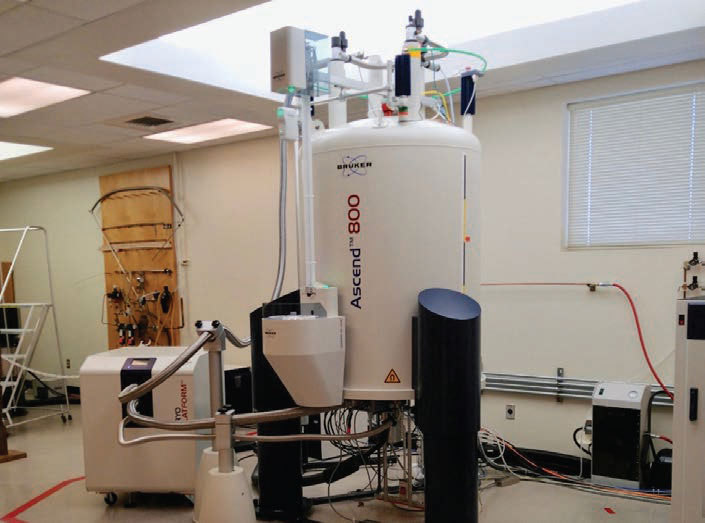Making the nucleus dance with NMR
28 November 2023Carlo Kupfernagel, a PhD student at the BioComposites Centre at Bangor University in Wales, explains NMR spectroscopy
Have you ever wondered about the chemical structure of the substances you are working with? If so, NMR-spectroscopy could be an interesting technique for you.
Nuclear magnetic relaxation (NMR) is a phenomenon that occurs when strong external magnetic fields interact with the magnetic field of an atomic nucleus.
Organic matter is usually made up of different isotopes. For example, the natural abundance of the isotopes of carbon are 98.9% for 12C, 1.1% for 13C, and less than 0.0001% for 14C. With hydrogen it is 99.96% for 1H and 0.015% for 2H. In most NMR experiments, the measured nucleus is either 1H or 13C, but other nuclei like 15N, 17O, 19F can also be investigated. The isotope must have an odd number of protons and/or neutrons to be visible in NMR experiments, this leads to the isotope having a non-zero nuclear spin.
Usually, a nucleus is in one of two possible spin states (up or down). In NMR experiments, all nuclear spins are aligned in an equilibrium state after applying a strong static external magnetic field. A weaker second magnetic field, which is oscillating, is applied to move nuclear spins out of this equilibrium state, which causes the nuclei to tumble and produce an electromagnetic signal. This process occurs near the resonance frequency of the spinning nucleus, and this depends on the chemical environment of the nucleus, which can tell us about the chemical environment the nucleus is in. As a result we can obtain distinct signals for nuclei that are, for example, in an aromatic ring, close to an electronegative atom, or in an aliphatic chain.
NMR spectroscopy is incredibly accurate and provides distinct peaks for every 1H or 13C atom in a sample. Each nucleus in the sample shows a separate peak in the NMR spectrum. Sometimes peaks overlap, and in this case we can run two-dimensional experiments, which can provide better resolution or even show which atoms form a chemical bond with one another.
Solution-state NMR is applied to compounds that are soluble in organic solvent. Most common solvents (for example, H2O, CCl4, DMSO, CH3OH) can be used in NMR experiments, but they must be deuterated to make them “invisible” to the spectrometer. Deuteration means that the 1H atoms of the solvent are exchanged by 2H (deuterium).
Solid-state NMR is available for samples that are not soluble. In this case, the sample is transferred to a rotor, which spins at a rate close to its physical limit. The spinning angle with regard to the magnetic field is often set to ca. 54.74°. This technique is called magic angle spinning (MAS) and significantly improves the signal quality of solid samples.
Nuclear magnetic resonance imaging (MRI) is a common medical application that is based on the same principal of nuclear magnetic relaxation. The large white tube from the hospital may be familiar to some of us.
Fortunately for us, the magnet spins around the sample in this case! MRI is also used in the material sciences.
NMR can obviously be used for analysing resin chemistry, but what about using it for wood? One option is to form a gel of finely milled wood powder with a solvent such as DMSO-d6, the gel can then be handled in solution state NMR. Another option is to use solid state magic angle spinning experiments. There are some very interesting results emerging using this technique, considering the alignment of polymers in the wood cell wall, and even investigating how they interact with each other and with water! However, for the latter option it is often necessary to increase the 13C content of the sample artificially to improve the signal intensity.
NMR spectroscopy is a powerful method for the structural determination of liquid and solid samples. While the sample preparation is straight-forward and the running time is usually less than one hour, NMR spectrometers are expensive and delicate instruments that are typically operated by a specialised group within a university or research institute.
The interpretation of NMR spectra takes some practice, but when done correctly, it provides accurate insight at molecular length scale. Some simpler bench-top versions of NMR spectrometers are available and may be more suitable for a day-to-day quality control in the production line of a company. But even the bench-top NMR spectrometers require a well-trained operator.
